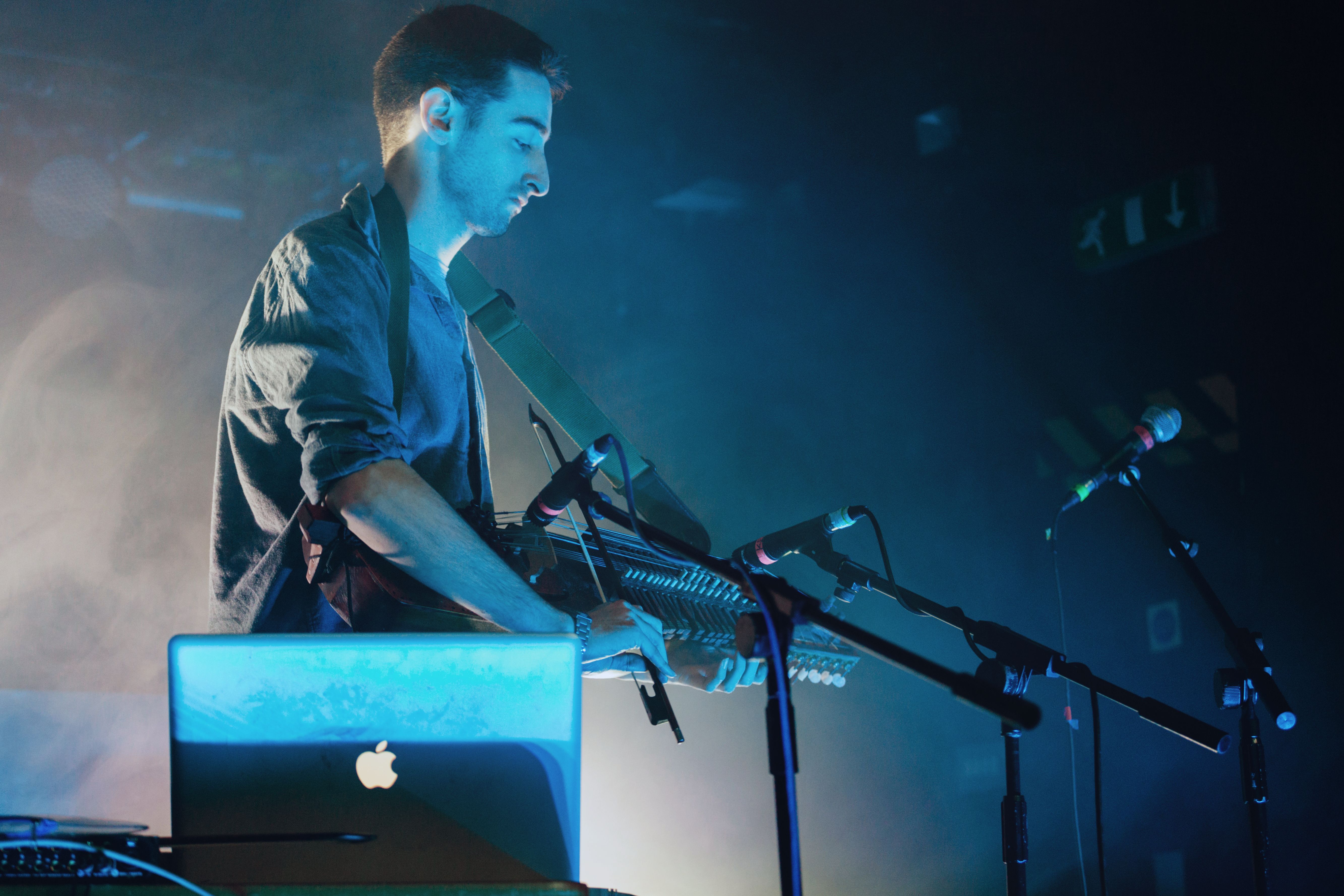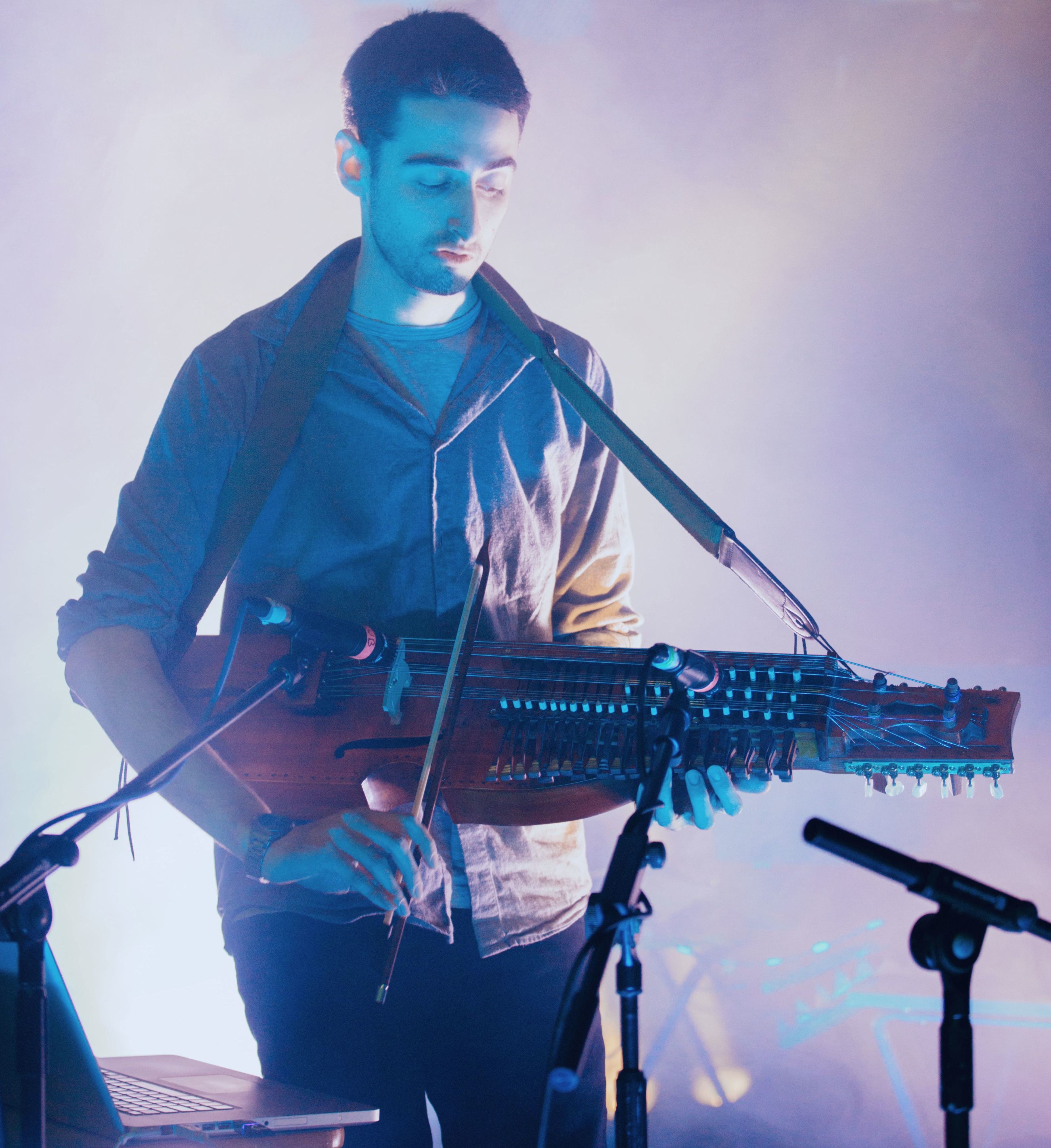
Robert Bentall on Embedded with CMMAS and Huddersfield University
Every year, Sound and Music shine a light on the work of the composers who are currently in residence on our Embedded and Portfolio programmes. These are our New Voices of 2016. They are creating new, exciting and innovative music, across disciplines, all over the UK.
In residence with Centro Mexicano para la Música y las Artes Sonora and Huddersfield University is Robert Bentall, electroacoustic composer on Embedded. His new work Telian is an “8-channel work with optional live nyckelharpa (Swedish keyed fiddle),” which integrates Swedish folk melodies with ambient sounds created by stretching said folk melodies. Bentall is a seasoned genre-hybridiser, utilising ambient, folk, minimalism, and dance with, of course, electroacoustic techniques, to create expressive musical produces of interweaved influences, suitable for various settings. Even Taylor Swift meets the avant-garde in Bentall’s “unintended by-product” of Telian, entitled Music for Nyckelharpa and Electronics. “I have always been interested in pop music; particularly how good pop tracks often contain earworms that can sort of infect the brain in a musical sense,” he writes, before going on to advise others to “make the music you want to hear, not what you think others want to hear.” Telling advice in the new music sector, and there’s plenty more gems from where that came from…
Ten words that describe what your music is, and what it’s all about:
Electroacoustic music that blends genres, fractures melodies and stretches instrumental resonances.
That’s 11 words. Sorry about that.
You’ve been working on Embedded with Centro Mexicano para la Música y las Artes Sonora and Huddersfield University. So far, has your experience been what you’d hoped for?
It has been a brilliant experience. I’ve had the pleasure of working at CMMAS, an internationally renowned centre for sonic arts. I’d heard of it during my studies, so when I applied for this Embedded scheme, I knew it would be a centre that would understand my work. The studios at both CMMAS and The University of Huddersfield have been a pleasure to compose in, and I’ve received some helpful compositional guidance along the way from composers in both of these institutions. Not to mention the fact I’ve learnt lots about Mexican culture and got to know Morelia, a beautiful yet compact city. The food is colourful and the locals are really friendly.
Your creative practice includes ‘genre hybridisation within multi-channel electronic works’. How has this developed whilst on the residency? Have you been able to ‘refine your compositional craft’?
The work created for performance at Visiones Sonoras 2016 and the HCMF is called Telian, and is an 8-channel work with optional live nyckelharpa (Swedish keyed fiddle). Within this piece, I recorded fragments of Swedish folk melodies on the nyckelharpa and worked these into a set of spatial canons. The melodic ideas are also stretched out to create ambient textures, and gradually envelop the listener as the piece develops.
A second part of my residency work, an unintended by-product of Telian, is a live piece designed for a more informal concert setting, called Music for Nyckelharpa and Electronics. This work is for live nyckelharpa and stereo electronics, these being largely fixed-media rather than triggered live. This work re-imagined pop tunes within a richly textured weave across a 20-minute work, and includes a rhythmical dance-like section that suits a club venue.
The refinement of my compositional craft came from realising that I really value the theatrical aspect of live performance with the nyckelharpa, thus choosing to compose a second version of Telian for the HCMF with the instrument on stage. Because the instrument is so unusual, people can enjoy looking at it as well as (hopefully) listening to it. Furthermore, my practice has developed through understanding that my music may have more settings that it works in, rather than just a concert hall.
You were interested in simulating a nyckelharpa ensemble when you applied to Embedded. How did it go?
This is basically what I achieved with Telian, creating a spatial canon using folk tunes within an 8-channel format. My use of electronic processing is not always particularly extreme – it can sound as if there are many different versions of the same instrument. The live nyckelharpa will add a ninth ‘voice’ to the eight ‘voices’ that are the loudspeakers when it is performed at the HCMF. This idea can still be further expanded using the University of Huddersfield’s 32-channel SPIRAL studio; I am in the early stages of making proper use of this facility, and hope to work more in here as my residency at Huddersfield ambles towards its end.
We hear that you’ve incorporated some influences from interesting sources in your nyckelharpa piece. Can you tell us more about these?
Two of the tunes worked into the piece are traditional melodies from the Swedish region Jämtland. The spin-off work, Music for Nyckelharpa and Electronics, re-works pop tunes originally performed by Taylor Swift and Carly Rae Jepsen into a Swedish folk style. The former tune is particularly prominent throughout the work, with the opening and closing sections both entirely derived from this tune. I have always been interested in pop music; particularly how good pop tracks often contain earworms that can sort of infect the brain in a musical sense.
You say that your works ‘merge ambient, folk, minimalism, electroacoustic and dance genres’. What is it about these genres, specifically, that takes your interest?
These are all genres that I take an interest in, perform, and/or enjoy listening to. Musical features from all of these styles work their way into my compositions. I’ve always loved ambient music for its immersive quality, like an aural bath. Minimalism has a firm place in my heart; I’ve always loved the music of Steve Reich. I find his work, particularly his more recent music (Cello Counterpoint, Double Sextet) very emotionally resonant. Electroacoustic music is brilliant, and is the genre my studies are rooted in. I’m just trying to put my own spin on it.
How do you feel that they work together?
Not always successfully. However, I am looking for the influences to emerge equally, rather than a piece to be predominantly electroacoustic with the other genres as an afterthought. I like to think of my work as polystylistic. Often, the type of genre will suggest the materials involved. For instance, my interest in ambient music means my pieces feature extended, drone based textures, but my interest in dance music may inflect certain chord progressions into a work that I hear a lot in that style. Telian is mainly a mixture of folk, ambient and electroacoustic sounds, and is certainly not the most extreme example of how many elements I can try and weave into a piece.
You’re also a senior lecturer in Music Production at Leeds College of Music. How do you find teaching the next generation of music-makers about ‘experimental’ and ‘avant-garde’ musics?
I really enjoy teaching. Seeing a positive student reaction to a piece I’ve played them is a cheap thrill, and makes the job worthwhile. Composing is slow labour that can feel isolating at times, whereas teaching is a socially engaged activity that forces me to think quickly. I find the two complement each other well. Sometimes, teaching avant-garde music can be problematic, as what I do doesn’t necessarily sound particularly extreme; the students hear a chasm between my electroacoustic compositions and some of the electroacoustic works I play for class discussions. I try to convey to students that just because music doesn’t contain extended techniques or complex harmonies doesn’t mean it isn’t experimental.
Do you have any advice for others looking to pursue careers within the new music sector?
Make the music you want to hear, not what you think others want to hear.
If you’re starting out as a composer, find something else you enjoy doing to supplement your income. This doesn’t have to be teaching – it’s not for everyone.
It’s okay for a piece to fail. That’s part of the process of becoming a better composer.
Move to the north of England. It’s much cheaper to live up here, so you can spend more time creating things and less time worrying about finances. Creative communities seem to be thriving in the Bermuda triangle of cities I’ve lived in: Sheffield, Manchester and Leeds.
Can you recommend any composers/artists to look out for in the next year?
Here are a few artists that I am listening to and enjoying at the moment. You can look out for them anytime as well as over the next 12 months:
How to Dress Well
Illuha
Dawn of Midi
Kaitlyn Aurelia Smith
Jlin
Giuseppe Ielasi
Laminate Pet Animal
Stevie Wishart
Porches
Tristan Perich
Find out more about Robert on the British Music Collection // Twitter // SoundCloud
Interview by Emma Sugarman (Communications Intern - Sound and Music)
There are 25 New Voices of 2016. Find out more about them here.
Tags

